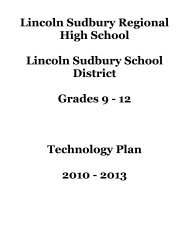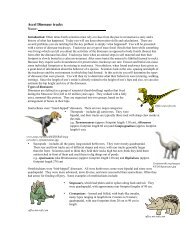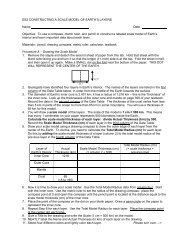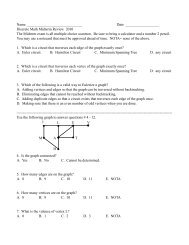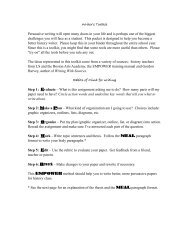Fetal Pig Dissection Introduction: Today, we begin a new chapter in ...
Fetal Pig Dissection Introduction: Today, we begin a new chapter in ...
Fetal Pig Dissection Introduction: Today, we begin a new chapter in ...
Create successful ePaper yourself
Turn your PDF publications into a flip-book with our unique Google optimized e-Paper software.
IV.Respiratory System:A. <strong>Dissection</strong> of the neck and thoracic cavityi. ____ Diaphragm: Flat muscle at the base of the thoracic cavity,attached to body wall. This separates the thoracic cavity from theabdom<strong>in</strong>al cavity.Now, cut through the rib cage with scissors on a l<strong>in</strong>e from the diaphragm to just to theright of the sternum (breastbone) up to your pig’s ch<strong>in</strong>. It is critical the you cut only theribs so as not to damage the delicate tissues below. Make two lateral cuts just posterior tothe front legs to make <strong>new</strong> flaps. You have now cut through the diaphragm to expose thethoracic cavity more clearly.ii. ____ Thymus: The thymus gland fills much of the throat are andmay extend over the heart. Confirm with the teacher that you havefound this. Then you can remove some of the thymus to give youa clear view of the neck region. The thymus is a part of theendocr<strong>in</strong>e system, not the respiratory.B. Respiratory System: Review the structures you have already observedi. ____ Nostrilsii. ____ Mouthiii. ____ EpiglottisIn the neck, where you have just dissected, f<strong>in</strong>d:iv. ____ Larynx: the voice box, or Adam’s apple; an enlarged whitestructure <strong>in</strong> the throat.v. ____ Thyroid gland: brownish bean-shaped structure at the base ofthe larynx. This is an endocr<strong>in</strong>e gland that produces hormones,which control metabolism. This is not a respiratory organ.vi. ____ Trachea: The “w<strong>in</strong>dpipe” a tube lead<strong>in</strong>g from the larynx tothe lungs.vii. ____ R<strong>in</strong>gs of cartilage: You can feel and see these r<strong>in</strong>gs on thetrachea. They hold the trachea open for constant air flow.


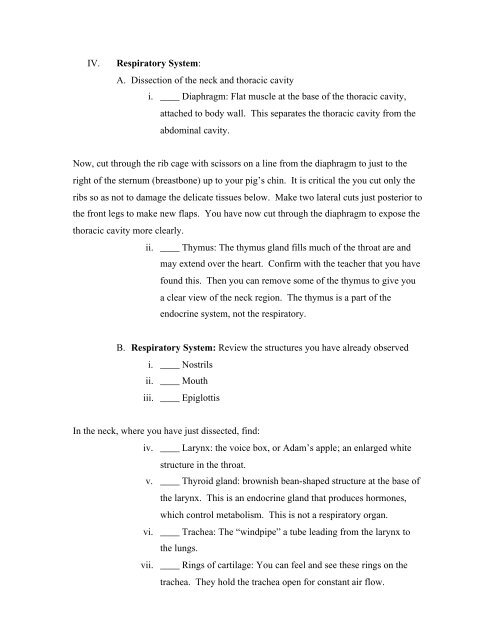
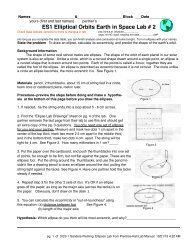


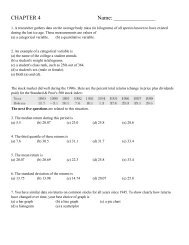


![';1asAu ro; las I sgeo8 leuo!]eslanuol aql utelqo o1 palenttouJ ue I ...](https://img.yumpu.com/49072782/1/190x221/1asau-ro-las-i-sgeo8-leuoeslanuol-aql-utelqo-o1-palenttouj-ue-i-.jpg?quality=85)
